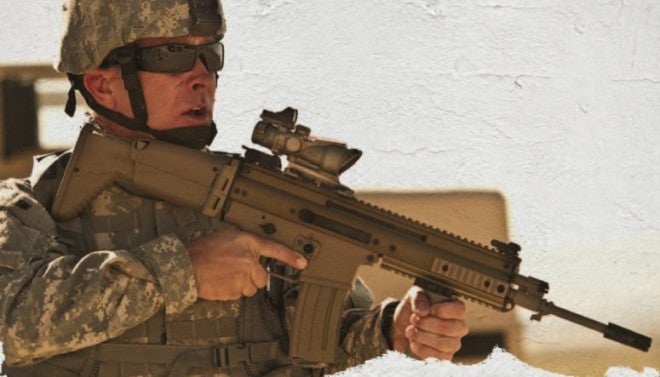This report from the Department of Defense Inspector General’s office says “no”. From the brief:
Objective
We initiated this audit to determine whether the Army justified its competition to acquire a new Individual Carbine (IC) weapon and whether the Army was implementing an effective acquisition strategy.Finding
The Army Deputy Chief of Staff, G-3/5/7, did not justify the requirement for a new carbine. This occurred because the Army Deputy Chief of Staff, G-3/5/7, did not follow the Small Arms Capabilities Based Assessment findings and recommendations, and inappropriately approved and validated the requirements document used to support the establishment of the individual carbine program. As a result, the Army wasted about $14 million on a competition to identify a source to supply new carbines it does not need. In addition, the Army plans to spend $2.52 billion over a 20-year life cycle to procure and maintain 501,289 carbines that its own analysis suggests can be delayed for another 10 years with no impact on readiness.
The writing is very straightforward and easy to read, so anyone with even a tangential interest in military acquisition programs (such as myself) should be able to follow it without issue. Because of this, instead of adding my own thoughts, I think it’s better to quote the document itself:
Small Arms Capabilities Based Assessment Methodology
The CBA included three analyses: functional area analysis, functional needs analysis, and functional solution analysis. As a group, the analyses identified required [small arms] capabilities, including identifying the tasks, conditions, and standards related to the execution of the required capabilities; and assessed whether the current and programmed force could accomplish the tasks to standards or whether capability gaps existed. The SA CBA then evaluated and recommended potential nonmateriel (for example, doctrine, organization, training, leadership and education, personnel, and facilities) and materiel approaches to close or mitigate the gaps determined to pose an unacceptable risk to the force.
The U.S. Army Infantry Center used a study team to conduct these analyses. As a part of these analyses, the study team used previous analyses, operational test data, validated and nonvalidated model results, data from recent operations, projected threat weapons estimates, and subject matter experts. In addition, the study team used professional military judgment to supplement quantitative data and analysis, relied on subject matter experts to identify conditions and standards where none were defined, and used warfighters to validate tasks, conditions, and standards.Small Arms Capabilities Based Assessment Findings and Recommendations
The study team determined there were significant SA gaps in soldier and small-unit capabilities that needed to be addressed through a combination of materiel and nonmateriel solutions. In addition, the study team concluded that there were no “silver bullet” solutions to any one gap and that some capability gaps required
additional analyses around which solution combinations could be built. The study team also concluded that several materiel and nonmateriel solutions existed that could significantly mitigate some of the gaps within the time frame of the CBA. However, the CBA final report stated that none of the solutions for meeting small-unit effectiveness, lethality, and survivability start with replacing the M4. [emphasis mine]
In my opinion, I’d rather the competition have been held than not. However, the IG’s analysis and conclusion doesn’t really surprise me. It’s difficult to justify spending billions to replace a weapons system that has given satisfactory service for half a century, with many more units currently being built and purchased by the Army on a regular basis, with another system that isn’t materially different.
 Your Privacy Choices
Your Privacy Choices
